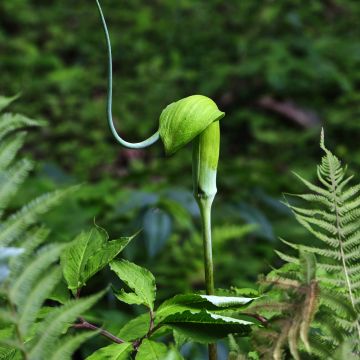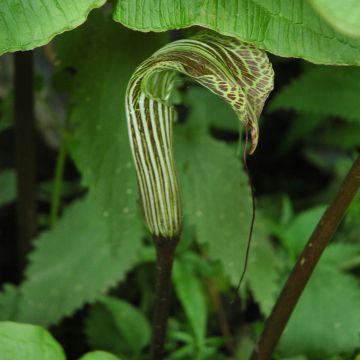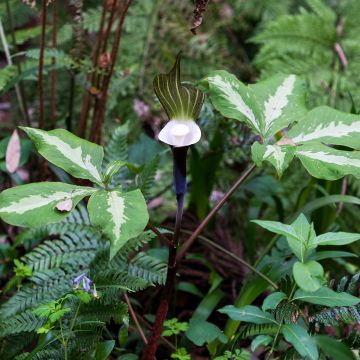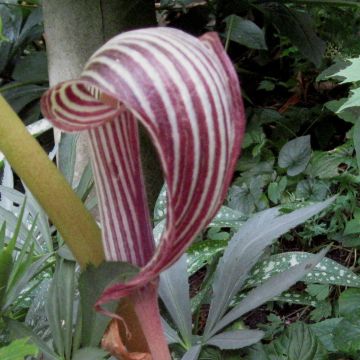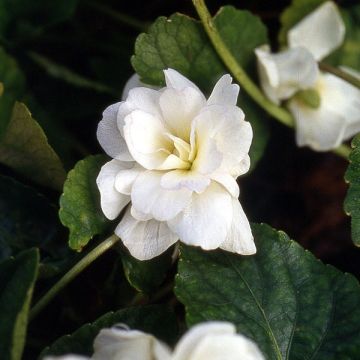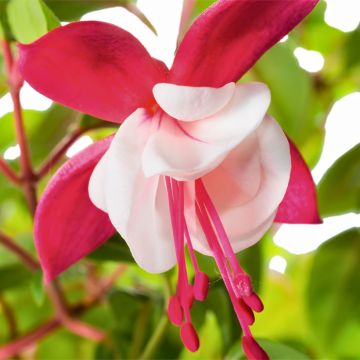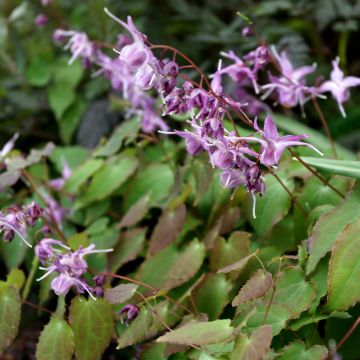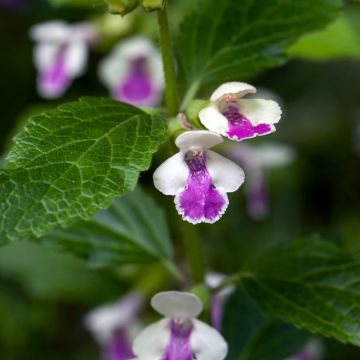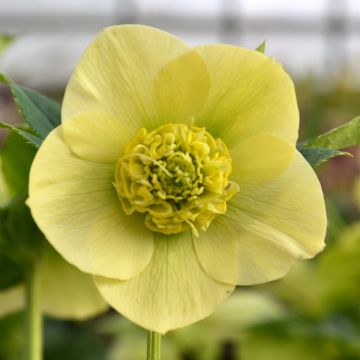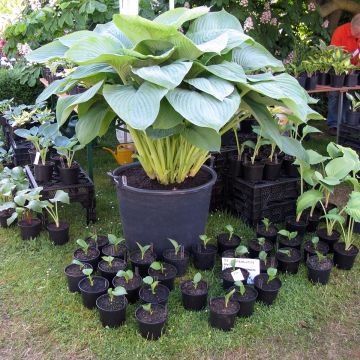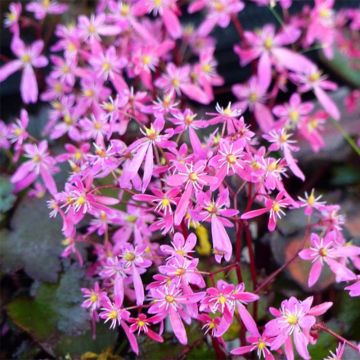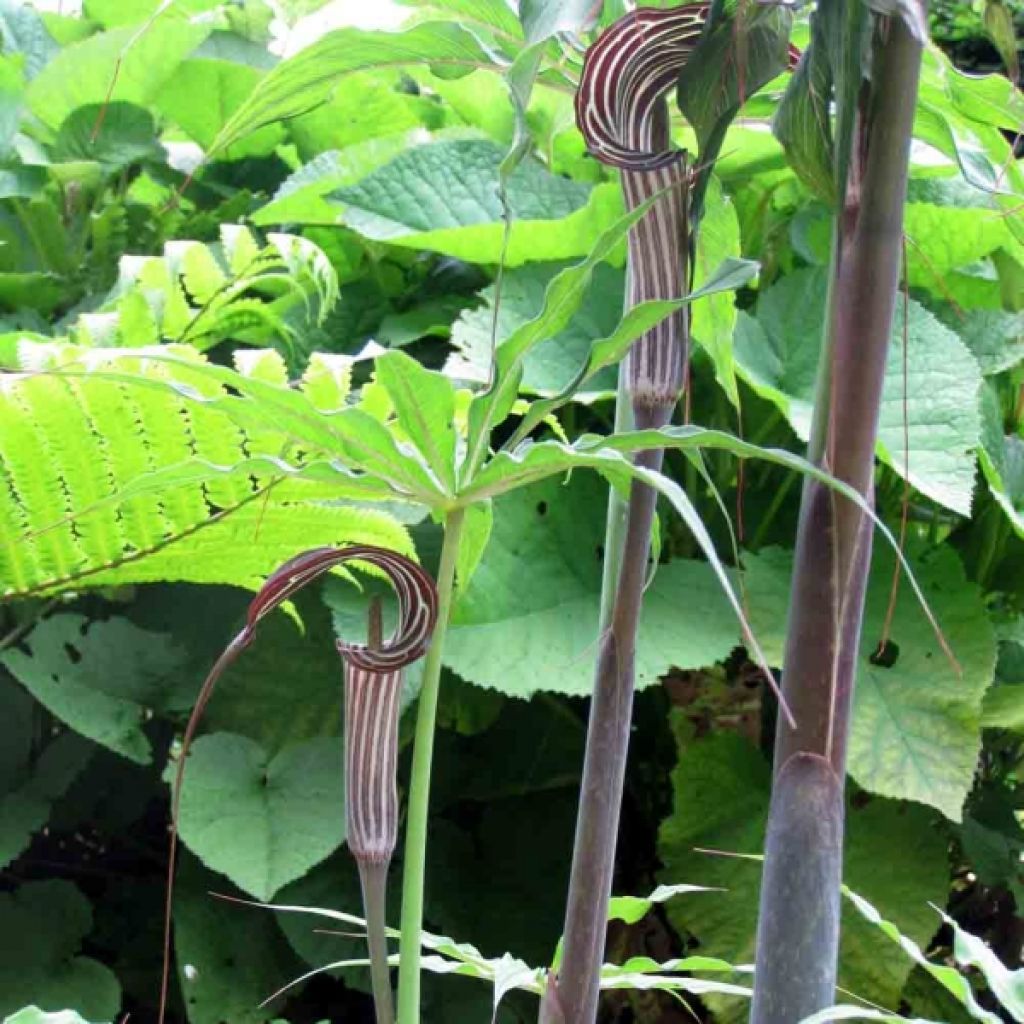

Arisaema ciliatum
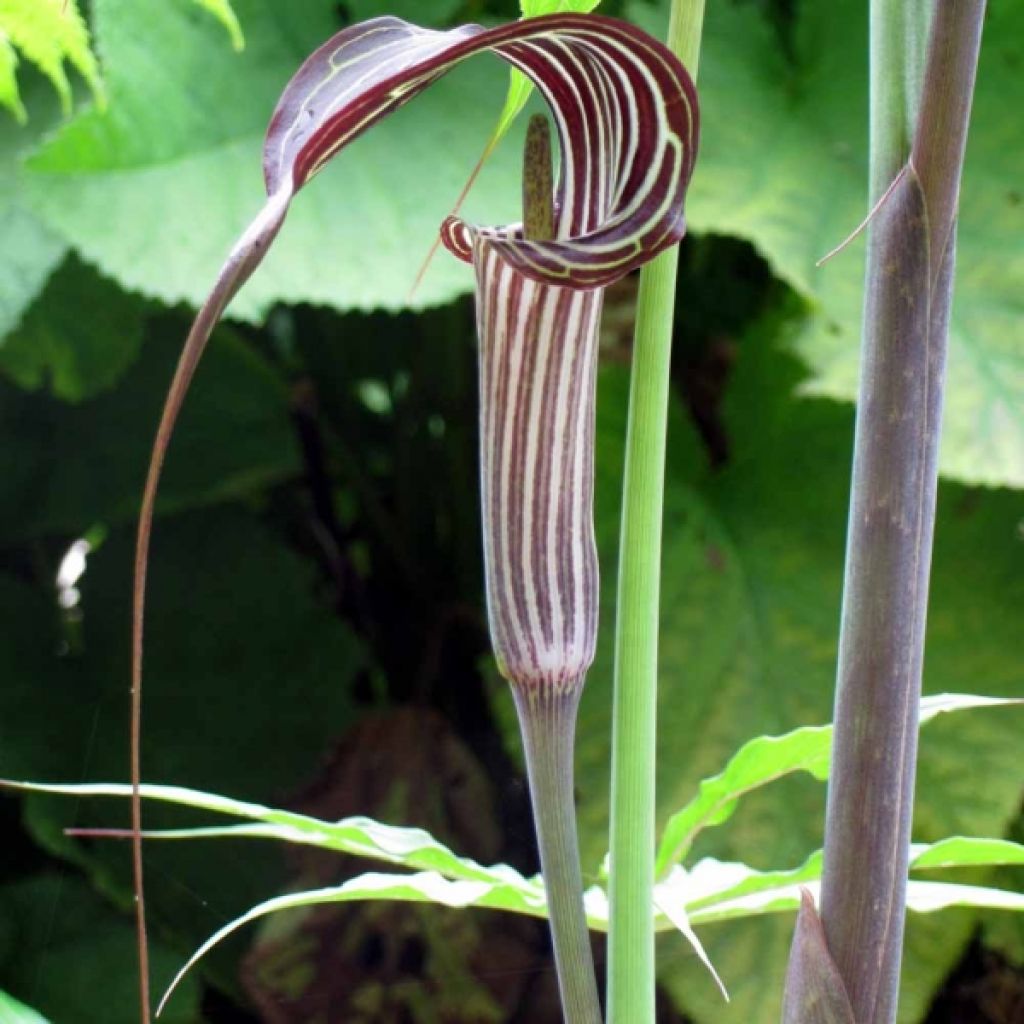

Arisaema ciliatum
Arisaema ciliatum
Arisaema ciliatum
Cobra lily
Very disappointed. Field of plants does not match the description or the photo, not worth the price paid. I got a refund and would not recommend it. Find it at nurseries where they have it in their garden for a lower price.
Maryvonne de Bretagne , 12/12/2015
This plant carries a 12 months recovery warranty
More information
We guarantee the quality of our plants for a full growing cycle, and will replace at our expense any plant that fails to recover under normal climatic and planting conditions.
From €5.90 for pickup delivery and €6.90 for home delivery
Express home delivery from €8.90.
Does this plant fit my garden?
Set up your Plantfit profile →
Description
The Arisaema ciliatum is a lovely graceful species, probably the easiest to cultivate, forming in early summer, upright flowers striped black and white, carried on stiff stems at a height of 60cm (24in).
In bloom in early summer, the Arisaema ciliatum reaches 50 to 60cm (20 to 24in) in height, its spathe (the name given to the flowers in this family) is black striped with white. Decorative, its leaves are whorled: they are composed of 9 to 12 light green leaflets, carried at the end of the stem and joined on the same axis, giving the impression of a "miniature palm tree".
Its corms (bulbs) are milky white to brown and very round, they form underground stolons and spread in the soil. Expect 2-3 years to obtain a beautiful shrub of 10 to 15 flowers.
The Cobra lily is a type of plant that belongs to the same family as Arums. It is often referred to as the "Cobra lily" due to its upright spathe that resembles a cobra. Despite its unique appearance, it is not commonly used in gardens. There are currently over 150 species of Cobra lily, most of which are native to Asia. Over half of these species can be easily grown in temperate zones like ours. These plants prefer wooded areas with cool, humus-rich soil, but they do not like waterlogged soil.
Plant Arisaema ciliatum in a cool environment together with bamboos (Fargesia), hostas and ferns.
Report an error about the product description
Flowering
Foliage
Plant habit
Botanical data
Arisaema
ciliatum
Araceae
Cobra lily
Cultivar or hybrid
Other Arisaemas
Planting and care
If you want to care for arisaemas, you don't have to be too careful with them. They don't need much, but they do need some things. They like soil with lots of humus, which should be light and fresh but can drain well. In summer, keep the soil moist, but don't let it dry out. In winter, don't make it too wet, or the bulb might rot if it's humid. They like to be in the shade, near big trees facing west. If the soil is heavy, mix 1/3 leaf compost and 1/3 non-calcareous sand with your topsoil to make it better, then plant the bulb on a bed of perlite. Put it about 6-8cm (2-3in) deep and cover it with your substrate. If you're planting in a pot, use a wide, shallow clay pot with a substrate of half-perlite or vermiculite and half-leaf compost. Bury the bulbs 6-8cm (2-3in) deep in the soil and keep it moist but not waterlogged. In winter, keep the pot in a frost-free place with a little coolness, and give it some water every 15 days. You can start watering again in early spring, around April, once the bulbs start growing.
Planting period
Intended location
Care
-
, onOrder confirmed
Reply from on Promesse de fleurs
Shade-loving perennials
Haven't found what you were looking for?
Hardiness is the lowest winter temperature a plant can endure without suffering serious damage or even dying. However, hardiness is affected by location (a sheltered area, such as a patio), protection (winter cover) and soil type (hardiness is improved by well-drained soil).

Photo Sharing Terms & Conditions
In order to encourage gardeners to interact and share their experiences, Promesse de fleurs offers various media enabling content to be uploaded onto its Site - in particular via the ‘Photo sharing’ module.
The User agrees to refrain from:
- Posting any content that is illegal, prejudicial, insulting, racist, inciteful to hatred, revisionist, contrary to public decency, that infringes on privacy or on the privacy rights of third parties, in particular the publicity rights of persons and goods, intellectual property rights, or the right to privacy.
- Submitting content on behalf of a third party;
- Impersonate the identity of a third party and/or publish any personal information about a third party;
In general, the User undertakes to refrain from any unethical behaviour.
All Content (in particular text, comments, files, images, photos, videos, creative works, etc.), which may be subject to property or intellectual property rights, image or other private rights, shall remain the property of the User, subject to the limited rights granted by the terms of the licence granted by Promesse de fleurs as stated below. Users are at liberty to publish or not to publish such Content on the Site, notably via the ‘Photo Sharing’ facility, and accept that this Content shall be made public and freely accessible, notably on the Internet.
Users further acknowledge, undertake to have ,and guarantee that they hold all necessary rights and permissions to publish such material on the Site, in particular with regard to the legislation in force pertaining to any privacy, property, intellectual property, image, or contractual rights, or rights of any other nature. By publishing such Content on the Site, Users acknowledge accepting full liability as publishers of the Content within the meaning of the law, and grant Promesse de fleurs, free of charge, an inclusive, worldwide licence for the said Content for the entire duration of its publication, including all reproduction, representation, up/downloading, displaying, performing, transmission, and storage rights.
Users also grant permission for their name to be linked to the Content and accept that this link may not always be made available.
By engaging in posting material, Users consent to their Content becoming automatically accessible on the Internet, in particular on other sites and/or blogs and/or web pages of the Promesse de fleurs site, including in particular social pages and the Promesse de fleurs catalogue.
Users may secure the removal of entrusted content free of charge by issuing a simple request via our contact form.
The flowering period indicated on our website applies to countries and regions located in USDA zone 8 (France, the United Kingdom, Ireland, the Netherlands, etc.)
It will vary according to where you live:
- In zones 9 to 10 (Italy, Spain, Greece, etc.), flowering will occur about 2 to 4 weeks earlier.
- In zones 6 to 7 (Germany, Poland, Slovenia, and lower mountainous regions), flowering will be delayed by 2 to 3 weeks.
- In zone 5 (Central Europe, Scandinavia), blooming will be delayed by 3 to 5 weeks.
In temperate climates, pruning of spring-flowering shrubs (forsythia, spireas, etc.) should be done just after flowering.
Pruning of summer-flowering shrubs (Indian Lilac, Perovskia, etc.) can be done in winter or spring.
In cold regions as well as with frost-sensitive plants, avoid pruning too early when severe frosts may still occur.
The planting period indicated on our website applies to countries and regions located in USDA zone 8 (France, United Kingdom, Ireland, Netherlands).
It will vary according to where you live:
- In Mediterranean zones (Marseille, Madrid, Milan, etc.), autumn and winter are the best planting periods.
- In continental zones (Strasbourg, Munich, Vienna, etc.), delay planting by 2 to 3 weeks in spring and bring it forward by 2 to 4 weeks in autumn.
- In mountainous regions (the Alps, Pyrenees, Carpathians, etc.), it is best to plant in late spring (May-June) or late summer (August-September).
The harvesting period indicated on our website applies to countries and regions in USDA zone 8 (France, England, Ireland, the Netherlands).
In colder areas (Scandinavia, Poland, Austria...) fruit and vegetable harvests are likely to be delayed by 3-4 weeks.
In warmer areas (Italy, Spain, Greece, etc.), harvesting will probably take place earlier, depending on weather conditions.
The sowing periods indicated on our website apply to countries and regions within USDA Zone 8 (France, UK, Ireland, Netherlands).
In colder areas (Scandinavia, Poland, Austria...), delay any outdoor sowing by 3-4 weeks, or sow under glass.
In warmer climes (Italy, Spain, Greece, etc.), bring outdoor sowing forward by a few weeks.

































